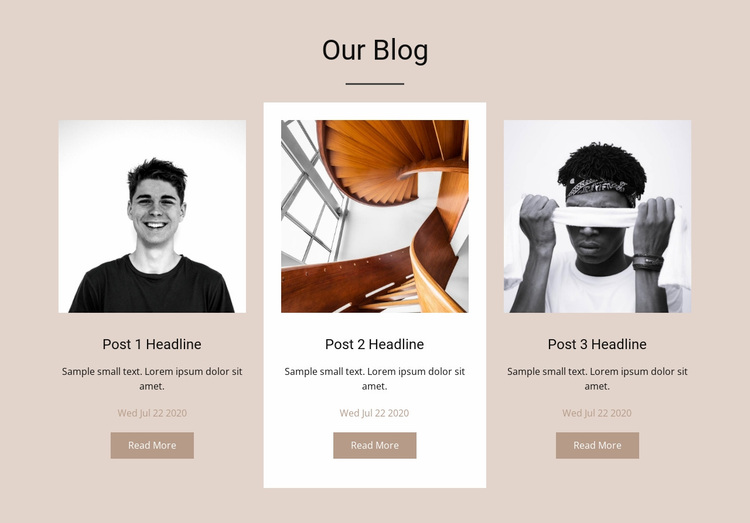Optimized Website Design Solutions for Enhanced Engagement
Optimized Website Design Solutions for Enhanced Engagement
Blog Article
Top Tips for Developing an Impactful Site Design That Converts
In today's digital landscape, the value of an impactful website layout can not be overemphasized, particularly when it concerns converting site visitors right into customers. To accomplish this, one must consider a selection of aspects, including recognizing the target audience, prioritizing customer experience, and enhancing for mobile systems. The tactical usage of compelling call-to-actions and a well-defined visual power structure plays a critical role in guiding customers via their journey. As we discover these essential elements, it ends up being evident that the success of your website rests on more than simply aesthetics; it needs a thoughtful strategy to style and performance.

Understand Your Target Audience
Comprehending your target audience is essential to reliable site style, as it lays the groundwork for developing an engaging individual experience. Recognizing that your individuals are, including their demographics, preferences, and actions, enables designers to customize the web site's material, format, and capability to satisfy certain needs.
Carrying out detailed marketing research is critical in this procedure. Studies, meetings, and analytics can supply valuable understandings into user assumptions and pain factors. By assembling this data, developers can create user characters that represent different sections of the audience, ensuring that design decisions are informed and pertinent.
Additionally, recognizing the target market aids in choosing proper design aspects such as color pattern, typography, and images that resonate with users. A site that speaks straight to its audience promotes a feeling of connection and count on, motivating longer brows through and higher conversion rates.
Inevitably, a user-centered approach to web site style not just improves customer complete satisfaction yet additionally sustains service purposes by driving involvement and commitment. By prioritizing the requirements and choices of the target audience, an internet site can successfully serve its function and attain preferred outcomes.
Prioritize Individual Experience
To enhance the general efficiency of an internet site, focusing on user experience (UX) is necessary (Website Design). A well-designed UX makes certain that visitors can navigate the website effortlessly, discover information promptly, and engage with content meaningfully. This leads to increased user contentment and higher conversion prices
Begin by carrying out instinctive navigating. Menus should be practically structured, permitting individuals to situate crucial areas of the site with marginal initiative. Consistency in layout components, such as color pattern and typefaces, promotes familiarity, which is critical for maintaining customer involvement.
In addition, consider the filling rate of your site. A hold-up of just a few secs can cause significant drop-offs, as customers are less most likely to wait on a slow-loading page. Improving photos and maximizing code can improve efficiency and maintain site visitors.
By prioritizing user experience, you not only develop an extra delightful atmosphere for site visitors however likewise strengthen your brand's trustworthiness. Eventually, a focus on UX is an investment in the long-term success of your website.
Optimize for Mobile Instruments
Enhancing for mobile gadgets is critical in today's electronic landscape, where a raising variety of customers access internet sites via mobile phones and tablets. A mobile-friendly design not only enhances user experience yet additionally plays a substantial my review here duty in enhancing internet search engine positions. To accomplish this, it is vital to adopt a responsive style that immediately changes to different screen dimensions and orientations.
%20%5B60%25%5D.jpg)
Loading speed is one more important variable; mobile customers are commonly much less client and anticipate rapid accessibility to info. By focusing on mobile optimization, you make sure that your site stays affordable and efficiently engages a more comprehensive audience.
Usage Compelling Call-to-Actions
A web site's efficiency typically rests on its capacity to lead site visitors towards preferred actions, making compelling call-to-actions (CTAs) crucial parts of design. CTAs function as the essential factors that direct individuals to involve with the site, whether that suggests purchasing, authorizing up for a newsletter, or downloading a source.
To develop efficient CTAs, clarity is critical. Usage concise language that clearly communicates the activity you want the user to take. Phrases such as "Obtain Begun," "Subscribe Free," or "Shop Now" not just communicate necessity yet additionally get rid of ambiguity. The placement of CTAs is equally important; they need to be strategically placed throughout the website to ensure they are conveniently noticeable, particularly in high-traffic locations.
Furthermore, the design of CTAs should attract attention without being meddlesome. Use contrasting shades and clear fonts to ensure they catch interest. Furthermore, take into consideration utilizing directional cues, such as arrows or pictures, to lead customers towards these buttons. By concentrating on these elements, businesses can substantially enhance individual involvement, driving conversions and ultimately achieving their internet site's objectives.
Emphasis on Visual Power Structure
Efficient web site layout counts greatly on a well-structured aesthetic power structure that guides customers through content effortlessly. By organizing elements in a fashion that focuses on details, developers can enhance user experience and facilitate decision-making. This involves using dimension, shade, comparison, and spacing purposefully to draw attention to one of the most critical elements of a website.
Making use of bigger fonts for headings and subheadings establishes a clear distinction between different areas, enabling users to check over here content effortlessly. Furthermore, employing contrasting colors for buttons and calls-to-action can record individual focus and urge interaction. Whitespace is one more important part; it avoids clutter and allows customers to concentrate on key messages without interruptions.
Images and graphics need to enhance the text while additionally sticking to the well-known power structure, reinforcing the general message (Website Design). Consistency in design aspects, such as color plans and typography, additional strengthens the visual pecking order, making navigation user-friendly

Final Thought
In conclusion, reliable site style demands a detailed understanding of the target audience, prioritization of user experience, and mobile optimization. Eventually, a well-executed site style offers as a vital component in driving user activities and accomplishing company purposes.
Report this page